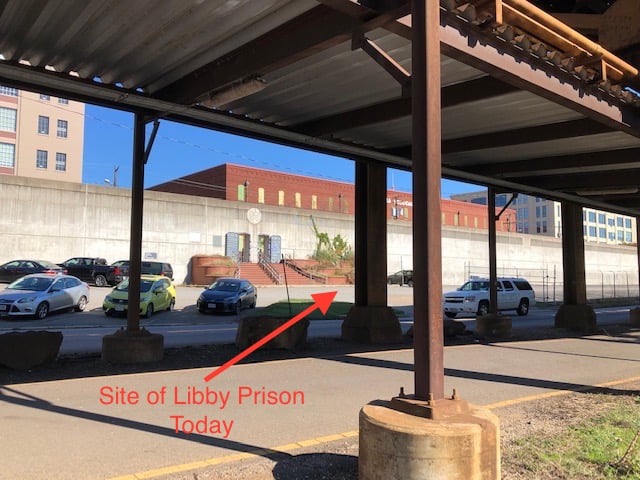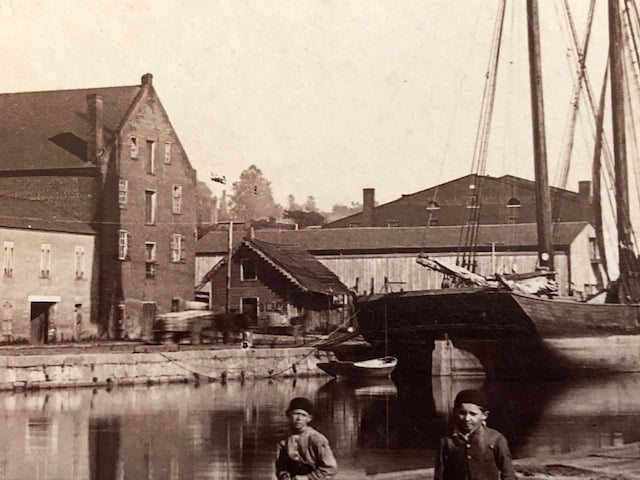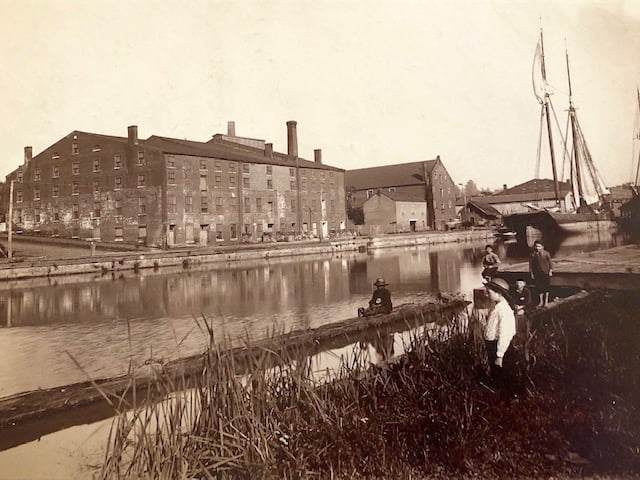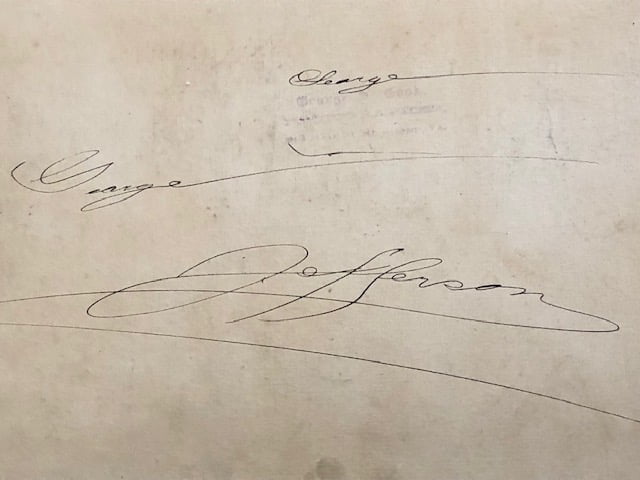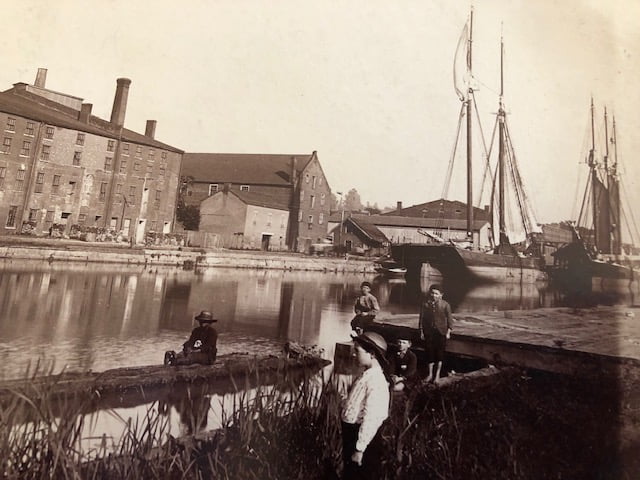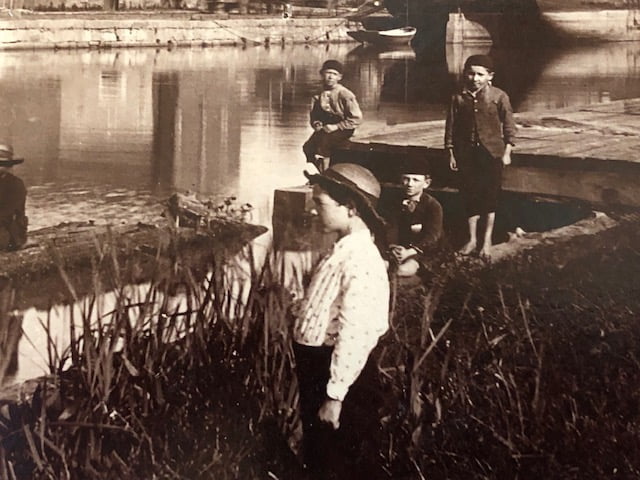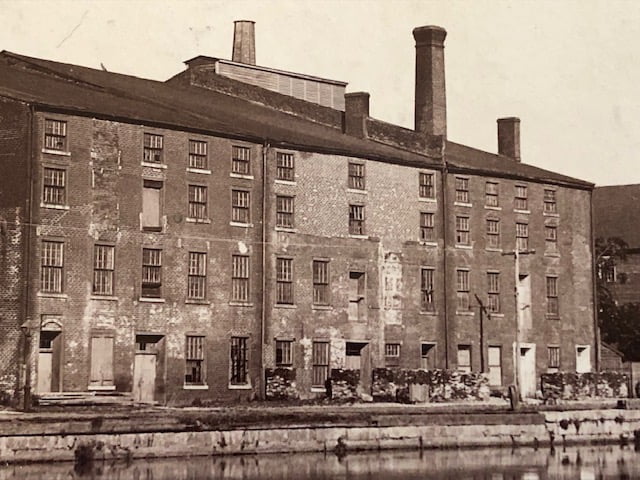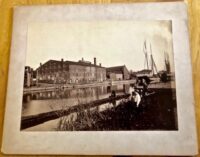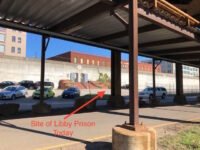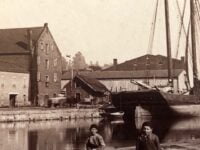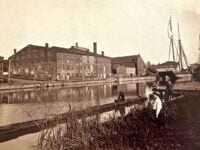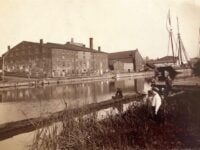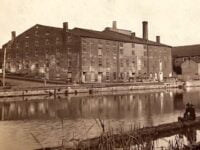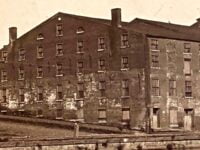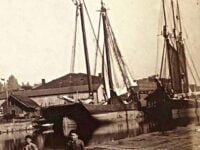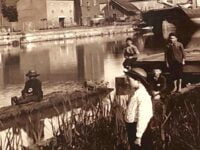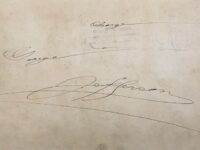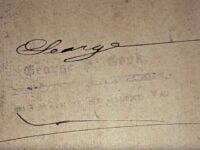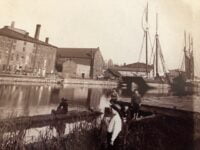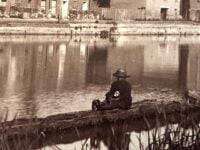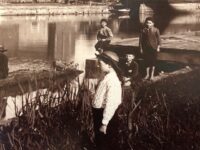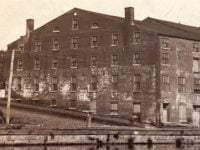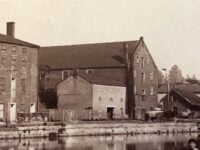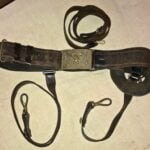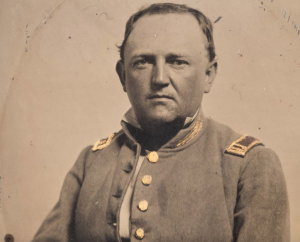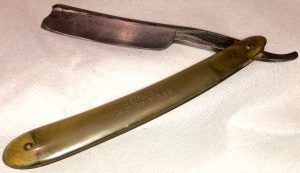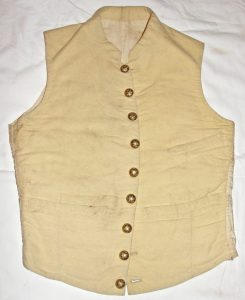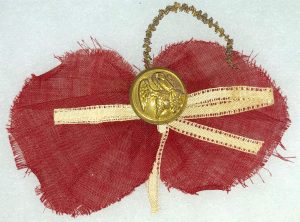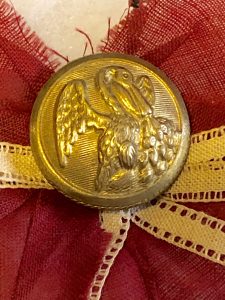Large Albumen Image of Libby Prison by Renown Photographer Geo. S. Cook
SOLD
Large Albumen Image of Libby Prison by Renown Photographer Geo. S. Cook – This rarely encountered large size albumen image of Libby Prison, bears the imprint of the famed Civil War era photographer, George S. Cook. At the time of this work, Cook had a studio at 913 E. Main Street, in Richmond, Virginia. This image was taken, by Cook, looking northeast, from just across the Kanawha Canal, in Richmond, on the south side of the canal, in the Shockoe Bottom area of the city. In the 1880s, Libby Prison was purchased by wealthy Chicago candymaker, Charles Gunther, then diassembled and re-assembled and renovated, in Chicago, to serve as a war museum (1889-1899). After the museum failed to draw enough crowds, the building was dismantled and was sold. We believe that this image was taken by Cook, some time in the 1870s or early 1880s, obviously prior to the disassembling by Gunther. One can note that the white paint covering the street level of the building, seen in Civil War period images, appears faded and worn in this image. There are numerous wartime images of Libby Prison, but few postwar images; we have seen some postwar stereographs, but none that show the expanse of this image or the masted ships docked along the north side of the canal. Today, the site of the prison is a parking lot, just north of the canal; Dock Street runs between the site of the prison and the canal. We have included in this listing, photos of the site of Libby Prison as it appears today, between S. 19th and S. 20th St., along Dock St., in Richmond, as well as a picture taken from near Cook’s location when he took this albumen, on the south side of the canal. The albumen is mounted on period cardstock, with Cook’s imprint on the back, as well as the signature of an unknown former owner – George Jefferson. The image and cardstock are in excellent condition, with some minor age toning. This is a fine and rare image of an iconic war period structure, still extant in postwar Richmond.
Measurements: Mat – Width: 12”; Height: 10”; Image – Width: 9.75”; Height: 7.25”.
George S. Cook
| George Smith Cook | |
| Born | February 23, 1819 |
| Died | November 27, 1902 (aged 83) |
George Smith Cook (February 23, 1819 – November 27, 1902) was an early American photographer, known for taking the first photograph of combat during a war.
George Cook was the first known photographer to make a photograph of actual combat during a war. Cook took the first image of its kind while visiting Charleston, South Carolina where he witnessed Union ironclad battleships firing near Fort Sumter on Fort Moultrie on September 8, 1863
Biography
He was born on February 23, 1819 in Stamford, Connecticut and was orphaned at an early age. Unsuccessfully, he worked in the mercantile business. He later moved to New Orleans and was studying art when daguerrotype photography was introduced in the United States in 1839. He ran a gallery in New Orleans, then for ten years traveled throughout the South. He would establish a studio in a town, train photographers, then sell the studio to them and move on. He finally settled permanently in Charleston, South Carolina and recorded the effect of the American Civil War on the city. He captured the first combat photograph ever taken during a visit to Fort Sumter of Union ironclads firing on Fort Moultrie. He moved to Richmond, Virginia and amassed the most complete collection of photographs of that city. He died on November 27, 1902.




